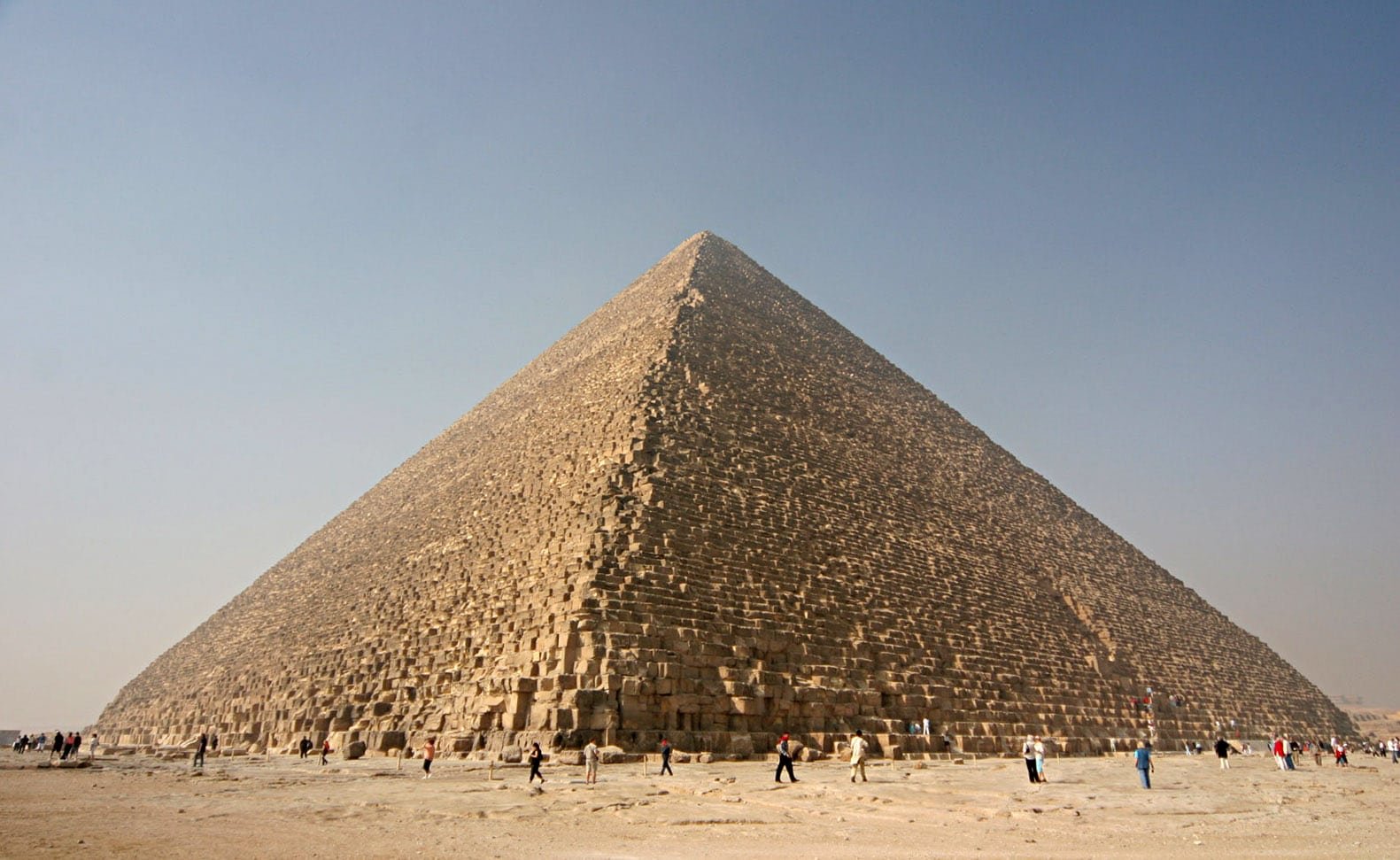

The Great Pyramid of Giza in Egypt is the largest pyramid in the entire world. It is clearly one of the most impressive structures that mankind has ever made. This being the case, it is worth asking who was responsible for the construction of the pyramid.
While Pharaoh Khufu was the monarch in whose reign it was constructed, there is no reason to assume that he personally designed it. So, who did?
In the vicinity of the Great Pyramid of Giza, there are several large cemeteries. Some of these contain the tombs of members of Khufu’s extended family. Others contain tombs of important court officials.
In one of the cemeteries to the west of the Great Pyramid of Giza, there is a particularly large tomb called a mastaba. This is a large, rectangular building with a flat roof and inward-sloping sides. It is much larger than all the other tombs in that particular cemetery.
In this large tomb, or mastaba, archaeologists discovered that it was the tomb of an individual who was quite important to the construction of the Great Pyramid. The name of this court official was Hemiunu. The archaeologists found an impressive statue depicting Hemiunu in this tomb with unusual lifelike realism.

The discovery of Hemiunu’s tomb revealed some important information. For one thing, his tomb revealed that he was the vizier of Egypt. The vizier was the second most powerful person in Egypt after the king.
Additionally, the inscriptions in this tomb refer to him as the ‘seal-bearer’ of the king. This means that he had the king’s royal seal and was able to grant official approval. This reinforces the fact that Hemiunu exerted considerable power over the country.
The inscriptions in the tomb also give him a variety of titles in which he is called the priest of various gods. However, some scholars believe these may merely be honorific and don’t actually refer to real functions he performed.
From a comparison with inscriptions from other sites, historians have concluded that Hemiunu was the son of a prince named Nefermaat. This prince, in turn, was the son of King Sneferu. In other words, Hemiunu was actually the nephew of Pharaoh Khufu in whose reign Hemiunu was vizier.
With these facts in mind, what is the basis for the conclusion that Hemiunu was the architect of the Great Pyramid of Giza? Ultimately, this conclusion comes from one of his titles that we see in his tomb. Scholars generally translate this title as “Overseer of All Construction Projects of the King.”
We know that Khufu was the king who got his people to construct the Great Pyramid of Giza. Hence, it stands to reason that Hemiunu, being the Overseer of All Construction Projects of the King, would have overseen the construction of that pyramid.
In reality, this does not necessarily mean that he was an architect in the sense that we understand that role today. Did he sit at a table and plan out the design of the pyramid in a drawing? Or did he have a role more similar to a manager, overseeing the work of a team of architects?
Simply put, we do not know what exactly his role entailed. Nonetheless, it is clear he was the one who was generally responsible for the pyramid’s construction. Therefore, it does make sense that he participated in planning its design.
